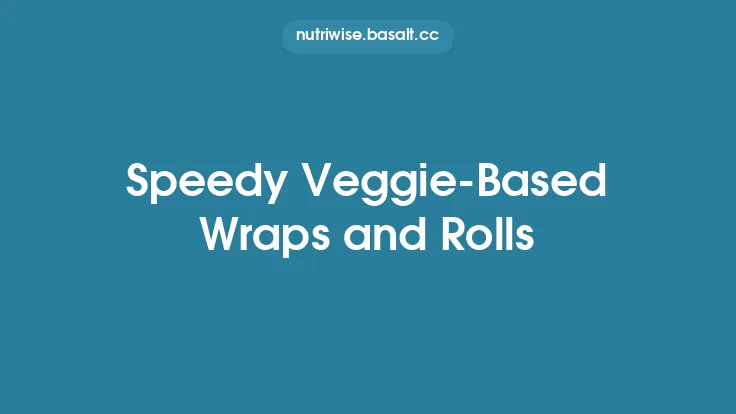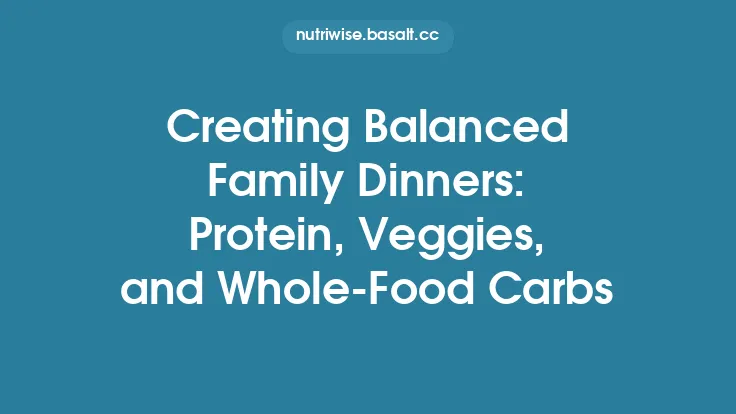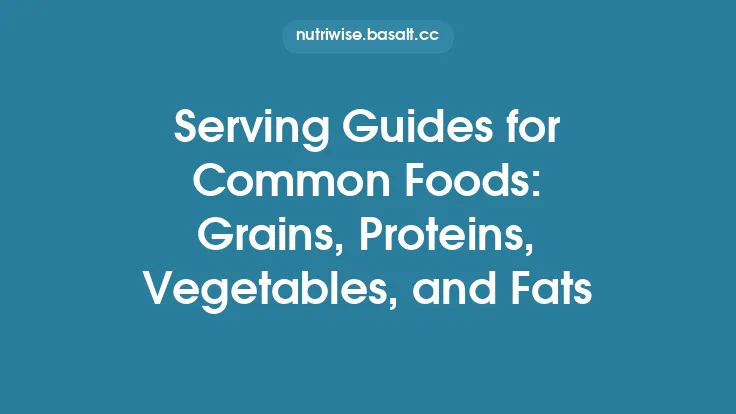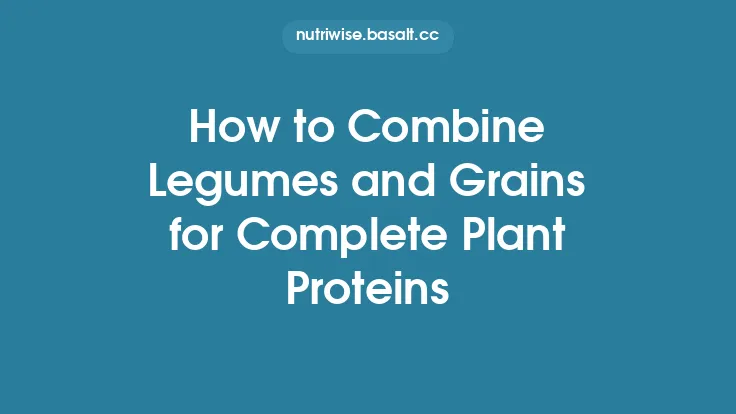Roasting a full sheet of vegetables and protein together on a single pan is one of the simplest ways to pull together a nutritious, satisfying meal with minimal effort and cleanup. The high, dry heat of the oven caramelizes the natural sugars in vegetables, creates a crisp‑golden exterior on meats or plant‑based proteins, and does so while preserving moisture inside. Because everything cooks together, flavors meld in the pan, eliminating the need for separate sauces or finishing steps. The result is a versatile, make‑ahead foundation that can be served hot, tossed cold into salads, or repurposed into grain bowls, wraps, or tacos throughout the week. Below, we break down every aspect of the sheet‑pan method—from the chemistry of caramelization to practical tips for storage—so you can rely on it as a go‑to solution in any meal‑planning arsenal.
The Science Behind Sheet‑Pan Roasting
Maillard Reaction vs. Caramelization
When vegetables reach temperatures above ~300 °F (150 °C), the Maillard reaction begins to occur between amino acids and reducing sugars, producing the deep brown crust and complex flavor compounds we associate with roasted foods. Starchy vegetables (e.g., carrots, potatoes, beets) also undergo caramelization, a process that breaks down sucrose into fragrant aldehydes and ketones, adding sweetness and a slight bitterness that balances savory notes.
Heat Transfer Dynamics
A heavy‑duty aluminum or steel sheet pan conducts heat quickly and evenly, while the oven’s convection fan (if available) circulates hot air, reducing hot‑spot formation. The thin layer of oil on the food’s surface acts as a thermal bridge, allowing the surface temperature to rise faster than the interior, which is why a brief high‑heat blast (425–450 °F / 220–230 °C) yields crisp edges without overcooking the core.
Moisture Management
Roasting is a dry‑heat method, but a small amount of moisture is essential to prevent the food from drying out. Sprinkling vegetables with a thin coating of oil (≈1 tsp per cup) creates a barrier that traps steam, keeping interiors tender while the exterior browns. Overcrowding the pan traps too much steam, leading to soggy results; spacing pieces at least ½‑inch apart promotes even evaporation and crispness.
Choosing the Right Vegetables and Proteins
Vegetable Selection Criteria
| Category | Ideal Traits for Roasting | Examples |
|---|---|---|
| Root & Starchy | High sugar content, firm texture | Sweet potatoes, carrots, parsnips, beets |
| Cruciferous | Tolerates high heat, develops nutty flavor | Broccoli, cauliflower, Brussels sprouts |
| Soft‑Fleshed | Quick to cook, benefits from brief exposure | Zucchini, bell peppers, cherry tomatoes |
| Leafy Greens (added at end) | Wilts quickly, adds color | Kale, spinach, arugula |
Aim for a uniform size (≈1‑inch cubes or wedges) to synchronize cooking times. If you must mix sizes, stagger the addition of later‑added items (see “Timing Tricks” below).
Protein Options and Their Roast Profiles
| Protein | Recommended Cut/Form | Roast Temp & Time* | Key Flavor Notes |
|---|---|---|---|
| Chicken breast or thigh | Skinless, boneless, ½‑inch thick | 425 °F, 15‑20 min | Mild, absorbs marinades well |
| Salmon fillet | 1‑inch thick, skin on | 425 °F, 12‑15 min | Rich, flaky, caramelizes quickly |
| Firm tofu | Pressed, cubed 1‑inch | 425 °F, 20‑25 min | Porous, soaks up sauces, develops crisp crust |
| Shrimp | Peeled, deveined, ½‑inch | 425 °F, 8‑10 min | Sweet, turns opaque, quick |
| Tempeh | Sliced ½‑inch | 425 °F, 20‑25 min | Nutty, firm, holds up to strong marinades |
*Times are approximate; always verify doneness (e.g., internal temperature 165 °F for poultry, 145 °F for fish).
Essential Tools and Equipment
- Full‑Size Sheet Pan (18×13 inches) – Aluminum for rapid heat, steel for even distribution; avoid thin, disposable pans that warp.
- Parchment Paper or Silicone Baking Mat – Prevents sticking, simplifies cleanup, and promotes even browning.
- Wire Rack (optional) – Elevates protein (especially poultry) for air circulation, yielding a crisper skin.
- Large Mixing Bowl – For tossing vegetables and protein with oil, spices, and marinades before spreading.
- Digital Instant‑Read Thermometer – Ensures safe internal temperatures without overcooking.
- Tongs or Spatula – For turning items halfway through cooking.
Building a Balanced Sheet‑Pan Meal: Ratios and Pairings
A well‑rounded sheet‑pan dish should hit the classic macronutrient distribution of roughly 40 % vegetables, 30 % protein, 30 % carbohydrate (adjust based on dietary goals). A practical visual guide:
- Vegetables: Fill ½‑⅔ of the pan surface.
- Protein: Occupy ¼‑⅓ of the pan, spaced apart or on a rack.
- Starchy Element (optional): Add a small portion of potatoes, sweet potatoes, or squash to the vegetable mix if you need extra carbs.
Flavor Pairing Principles
- Acid + Fat: A splash of lemon juice or balsamic glaze after roasting brightens the dish and balances the richness of oil.
- Sweet + Savory: Carrots with cumin, or Brussels sprouts with maple syrup, create depth.
- Herb + Spice: Fresh herbs (rosemary, thyme) pair well with garlic and smoked paprika for a smoky profile; Asian‑inspired blends (ginger, soy, sesame oil) work for tofu or shrimp.
Mastering Seasoning and Marinade Techniques
Dry Rub vs. Wet Marinade
- Dry Rub: Combine salt, pepper, and spices (e.g., smoked paprika, cumin, garlic powder). Salt draws out moisture, creating a slight brine that concentrates flavor and promotes crispness.
- Wet Marinade: Use an acid (vinegar, citrus), oil, and aromatics. Limit marinating time for delicate proteins (shrimp, fish) to ≤30 min to avoid “cooking” them.
Layered Seasoning Approach
- Base Coat: Toss vegetables with a light oil drizzle and a pinch of salt; this ensures even heat transfer.
- Protein Coat: Apply a more concentrated rub or brief wet marinade to the protein, allowing it to sit for 10‑15 min before assembly.
- Finishing Sprinkle: Add fresh herbs, a squeeze of citrus, or a drizzle of flavored oil (e.g., chili‑infused olive oil) immediately after removal from the oven.
Step‑by‑Step Roasting Process
- Preheat Oven: Set to 425 °F (220 °C). If using convection, reduce temperature by 25 °F (≈15 °C).
- Prepare Pan: Line with parchment or a silicone mat; optionally place a wire rack for protein.
- Season Vegetables: In a large bowl, toss cut vegetables with 1‑2 tbsp oil, salt, and any dry rub components. Spread in a single layer, leaving gaps.
- Season Protein: Pat protein dry, apply rub or quick marinade, then place on the pan (or rack) alongside vegetables.
- Initial Roast (10 min): Roast uncovered; this begins caramelization.
- Stir/Flip (midpoint): Using tongs, turn vegetables and protein for even browning.
- Final Roast (5‑10 min): Continue until vegetables are fork‑tender and lightly charred, and protein reaches safe internal temperature.
- Rest (5 min): Let the pan sit off the heat; residual heat finishes cooking and allows juices to redistribute.
- Finish: Drizzle with finishing oil, sprinkle fresh herbs, and serve immediately or portion for storage.
Timing Tricks: Staggered Cooking for Perfect Results
- Layered Add‑Ins: Start with denser vegetables (root crops) for the first 10 minutes, then add softer veggies (zucchini, bell peppers) and delicate proteins (shrimp, fish) for the remaining time.
- Two‑Pan Method: If you have a second sheet pan, roast proteins on one and vegetables on the other simultaneously; this eliminates the need for staggered timing and ensures each component receives optimal heat.
- Pre‑Roast Starch: Par‑boil potatoes or sweet potatoes for 5 minutes before spreading; this reduces overall oven time and guarantees a fluffy interior.
Customizing for Dietary Preferences
| Preference | Adjustments | Example Combination |
|---|---|---|
| Vegetarian | Replace animal protein with tofu, tempeh, or chickpeas (pre‑soaked). | Roasted broccoli, carrots, and marinated tempeh. |
| Gluten‑Free | Ensure all sauces, marinades, and seasonings are certified gluten‑free. | Lemon‑herb chicken with gluten‑free soy sauce glaze. |
| Low‑Carb/Keto | Emphasize non‑starchy veggies; omit potatoes; add high‑fat protein (salmon, pork belly). | Cauliflower, Brussels sprouts, and salmon with avocado oil. |
| Paleo | Use only animal proteins, root vegetables, and natural fats; avoid legumes and dairy. | Sweet potato wedges, carrots, and grass‑fed steak. |
| Vegan | Choose plant‑based proteins (tofu, seitan, lentils) and dairy‑free oils. | Marinated tofu with mixed bell peppers and kale. |
Meal Prep and Storage Strategies
- Cool Quickly: After resting, spread the roasted mix on a cooling rack for 10‑15 minutes to prevent condensation.
- Portion: Divide into airtight containers (glass or BPA‑free plastic). Aim for 1‑2 cups of vegetables and 4‑6 oz of protein per serving.
- Refrigerate: Store in the fridge for up to 4 days.
- Freeze: For longer storage, flash‑freeze on a tray (20‑30 min), then transfer to freezer bags; lasts 2‑3 months. Thaw overnight in the fridge before reheating.
Reheat Tips
- Oven Reheat: 350 °F for 10‑12 minutes; restores crispness.
- Skillet Finish: Heat a splash of oil, add leftovers, and sauté for 3‑4 minutes to re‑crisp edges.
- Microwave (quick): Use a microwave‑safe cover, heat 1‑2 minutes, then finish under a broiler for 2 minutes if you desire a crisp top.
Repurposing Leftovers
- Grain Bowls: Toss roasted veggies and protein over quinoa, farro, or cauliflower rice; drizzle with tahini or vinaigrette.
- Wraps & Tacos: Warm a tortilla, add a scoop of the mix, top with avocado, salsa, or slaw.
- Salads: Cool leftovers, combine with mixed greens, nuts, and a citrus‑yogurt dressing for a hearty lunch.
- Soup Base: Blend a portion with broth for a velvety vegetable‑protein soup; add herbs for freshness.
Nutritional Highlights and Health Benefits
- Fiber Boost: A single serving of mixed roasted vegetables provides 5‑7 g of dietary fiber, supporting digestive health and satiety.
- Protein Density: Depending on the protein choice, each portion delivers 20‑35 g of high‑quality protein, essential for muscle maintenance and metabolic health.
- Antioxidant Load: Caramelized carrots, bell peppers, and Brussels sprouts retain high levels of beta‑carotene, vitamin C, and glucosinolates, which have been linked to reduced oxidative stress.
- Healthy Fats: Using olive oil or avocado oil supplies monounsaturated fats that improve lipid profiles and aid in the absorption of fat‑soluble vitamins (A, D, E, K).
Frequently Asked Questions
Q: Can I use a lower oven temperature to avoid burning?
A: Yes, 400 °F works well, but you’ll need to extend cooking time by 5‑10 minutes. Keep an eye on the browning level; a higher temperature yields better caramelization.
Q: My vegetables turn out soggy—what’s wrong?
A: Overcrowding is the most common culprit. Ensure each piece has space for steam to escape. Using a convection setting also helps draw moisture away.
Q: How do I prevent chicken from drying out?
A: Brine the chicken briefly (½ cup water + 1 tbsp salt, 15 min) or coat it with a thin layer of oil and a modest amount of salt. The skin or surface moisture will lock in juices during the high‑heat blast.
Q: Is it safe to reuse the same pan for multiple meals without washing?
A: For food safety, always wash the pan between uses. Residual bits can harbor bacteria and affect flavor. However, you can line the pan with fresh parchment each time to simplify cleanup.
Q: Can I add fresh herbs before roasting?
A: Delicate herbs (parsley, basil, cilantro) lose flavor and can burn at high heat. Add them after roasting. Hardy herbs (rosemary, thyme, sage) can be tossed in before cooking for infused aroma.
By mastering the fundamentals of sheet‑pan roasting—understanding the science, selecting complementary vegetables and proteins, timing each component, and planning for storage—you gain a reliable, adaptable method that fits seamlessly into any quick‑and‑easy meal‑planning routine. Whether you’re feeding a busy family, prepping meals for the workweek, or simply craving a wholesome dinner with minimal dishes, the sheet‑pan technique delivers flavor, nutrition, and convenience in one tidy, evergreen package. Happy roasting!





